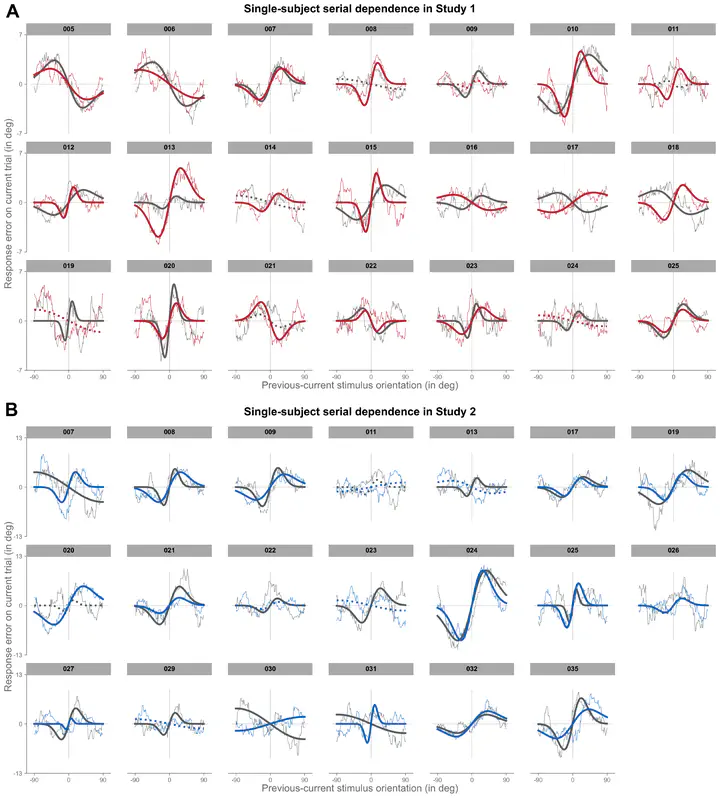Stable perceptual phenotype of the magnitude of history biases even in the face of global task complexity

Abstract
According to a Bayesian framework, visual perception requires active interpretation of noisy sensory signals in light of prior information. One such mechanism, serial dependence, is thought to promote perceptual stability by assimilating current percepts with recent stimulus history. Combining a delayed orientation-adjustment paradigm with predictable (study 1) or unpredictable (study 2) task structure, we test two key predictions of this account in a novel context: first, that serial dependence should persist even in variable environments, and, second, that, within a given observer and context, this behavioral bias should be stable from one occasion to the next. Relying on data of 41 human volunteers and two separate experimental sessions, we confirm both hypotheses. Group-level attractive serial dependence remained strong even in the face of volatile settings with multiple, unpredictable types of tasks, and, despite considerable interindividual variability, within-subject patterns of attractive and repulsive stimulus-history biases were highly stable from one experimental session to the next. In line with the hypothesized role of serial dependence, we propose that, together with previous work, our findings suggest the existence of a more general individual-specific fingerprint with which the past shapes current percetion. Congruent with the Bayesian account, interindividual differences may then result from differential weighting of sensory evidence and prior information.